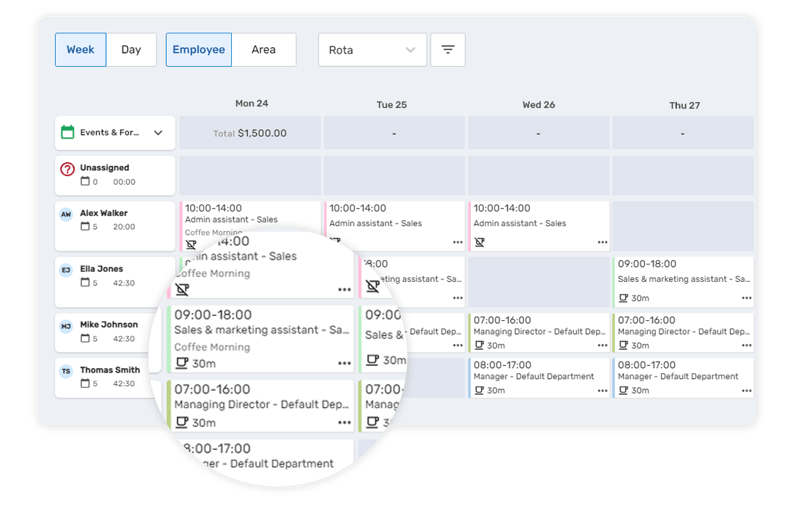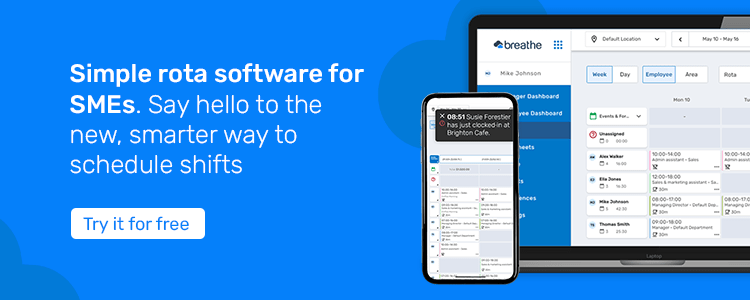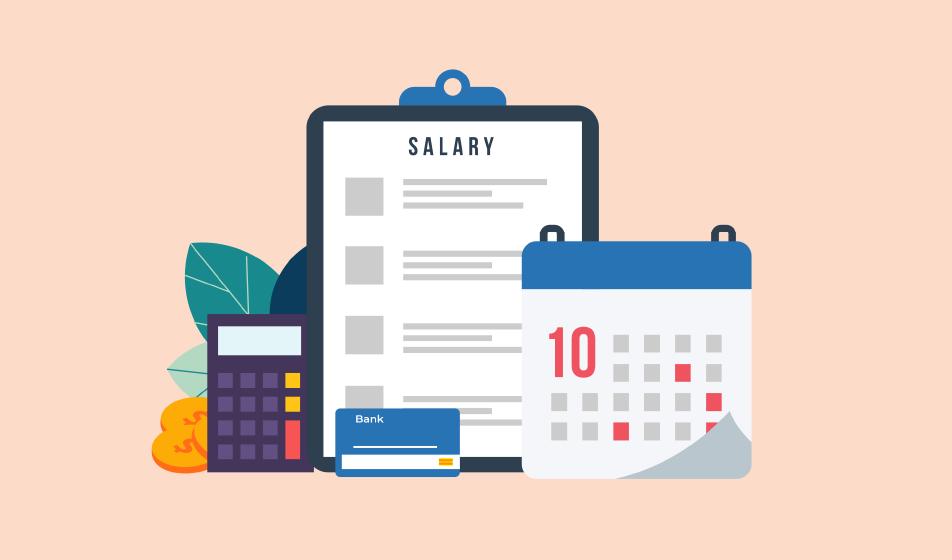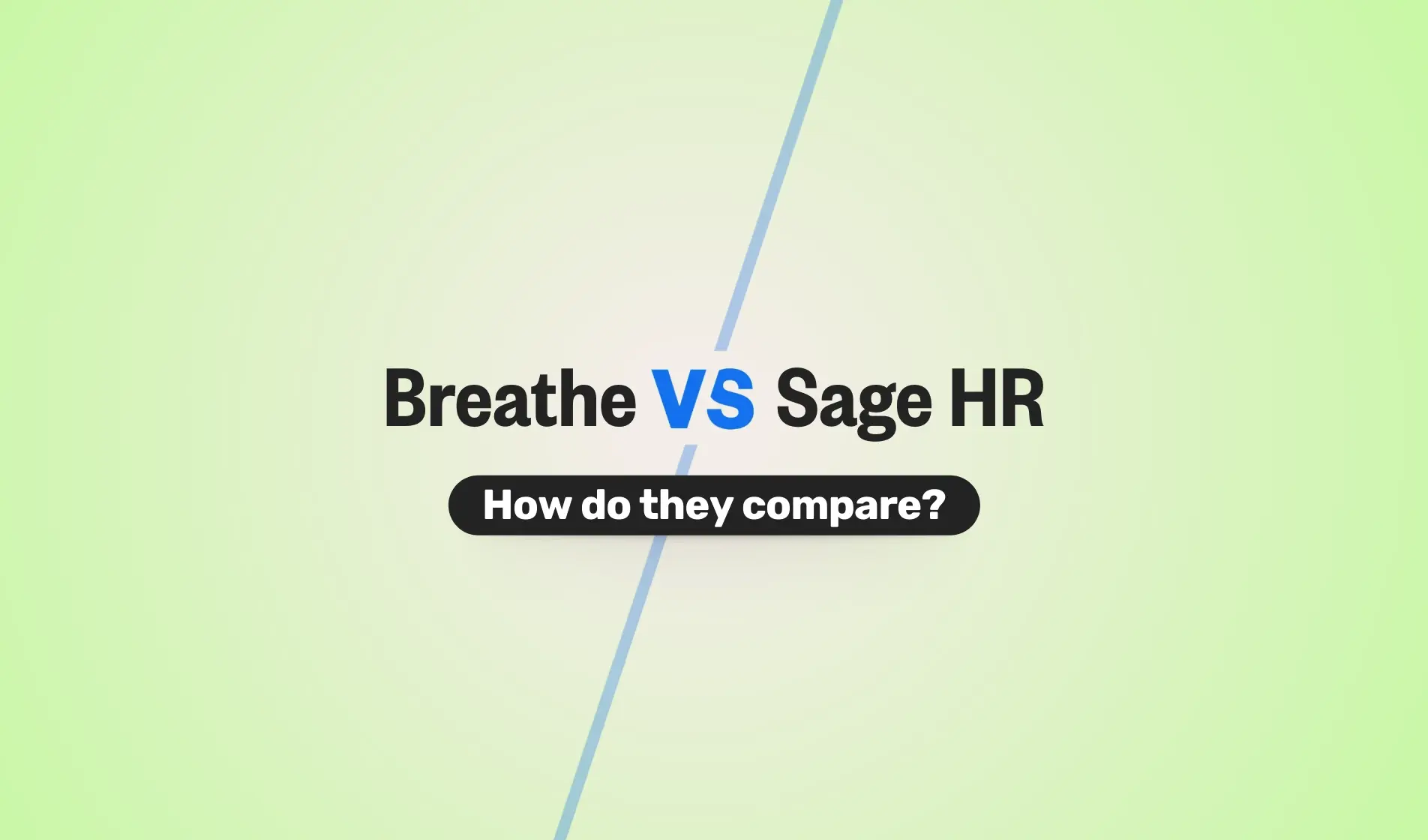We know that creating an effective rota for your workplace can be tricky. Holidays, sickness and last minute leave requests can catch you off-guard, short-staffed, and cause stress for SMEs.
This blog will cover what you need to know to make an effective rota that keeps your staff happy, and ensure your workplace is fully equipped for anything that comes its way (and the different ways you can create a rota).
How can SMEs make a rota that works?
As an employer you should make sure your rota follows these guidelines
Create - and use - a template
Setting up a template will ensure you don't have to start from scratch every week, or every month. Help yourself plan for future shifts with spending some time setting up a template that works for your business.
Quick to build
An effective rota for your workplace should be many things, but most importantly: it has to be quick to build.
In the healthcare, retail and hospitality industries, a working day can be hard to predict, never mind a week. A rota which is quick to build, easily adaptable and takes into account last minute changes without disruption can keep you ahead of most unforeseen challenges.
Use data to make informed decisions
You will have to incorporate the right balance of workers. Different workers will fit better with different situations: some may prefer night shifts, while others weekends.
A well-prepared rota will make sure the right staff members are being used at the correct times. Use data and analysis to find out when busiest shifts are. This way you can make sure you are correctly staffed, and people are placed where they are needed most. You don’t want lots of staff during quiet periods and a notable shortage when you’re at your busiest.
This is all especially important when you are thinking about creating a fair rota schedule.
Get ahead
Your rota should be set several weeks in advance, but take into consideration a great deal of flexibility.
A guaranteed way to make workers feel insecure and resentful in their role is to routinely update shift patterns at the last minute. For starters, it can stop employees from planning anything enjoyable in their free time with any degree of certainty!
Plan ahead so all staff members know when they're working, and communicate with them that extenuating circumstances such as sickness, absences, or a particularly busy period may cause slight alterations.
.webp?width=790&name=Rota%20HP%202-min%20(1).webp)
What makes an effective rota?
We've put together a few factors that help to make an effective rota:
Stable and accurate
Make sure your work rota is stable and accurate, with no one getting overworked or under-used. Also ensure shifts are balanced between staff members, unless there are pre-arranged agreements where you or another staff member have agreed with your employer to work only weekends or nights.
Easily log unavailability in a flash with Rota, Time & Attendance
Accessible at home
A rota that is accessible from home can help you easily keep track of your shifts. This can also help stop staff shortages. If you are ill or circumstances arise when you need to change your shift, you can inform other members of staff to check the rota. An employee-friendly rota, such as Breathe's Rota, Time & Attendance software, will be mobile friendly, allowing you to check shifts from the comfort of your own phone.
Easy to use, with notifications
Any rota that is created should be easy to use. You and your team should be able to access it easily from home, or on your mobile device, and notify shift organisers when the rota needs changes. As an employee you should always be notified when any shift is changed in advance without having to come into work to check.
An easily accessible rota with notifications should make shift changes—and finding cover for any changes—simple to address. This also includes easy communication between yourself and other staff members to arrange rota alterations amongst yourselves, without any fuss.
Ways to create a simple rota
There are many different ways to create a rota that your team can easily use:
Spreadsheets
Spreadsheets can be heavily customised, and can contain most of the information needed by staff and rota creators, such as hours and wages. Requests can also be added in a separate column.
However, spreadsheets can be a lot of work when it comes to keeping track of leave and staff requests. While both Google Sheets and Microsoft Excel are becoming easier to collaborate on, working on a spreadsheet is a manual task that can quickly become time consuming.
Pen and paper
The simplest option and is very customisable. Drawing up a rota with pen and paper can make it extremely personalised, but with everything being handwritten this can be very time consuming (and untidy - what did Steve write, there?)
In comparison to the digital tools available, a pen and paper rota is incredibly hard to share and edit at short notice. This means that changes between staff members can be difficult to keep track of. Additionally, future planning will take a large amount of time and organisation, as communication with staff is limited and requires on-site interaction.
Word documents
A table can be created within a Word document that can contain all the basic information needed for a staff rota. Both Google Docs and Microsoft Word have become increasingly collaborative, but using a Word document comes with its own problems of communication, long term planning and last-minute changes.
Rota management software systems
Although features may differ between software, many workplaces these days prefer to take advantage of cloud-based rota software.
Cloud-based rota management systems often come with a range of exciting and useful features, including:
-
Simple online access for all staff members
-
Flexible long term shift planning
-
Custom notifications systems
-
Easy edit access
But they’re not without drawbacks. For example, the interface itself will be unfamiliar to most staff, and will require some getting used to. However, with a good customer support network this should only cause a small period of adaptation before your rota starts to thrive.

Breathe's simple rota software has been designed for busy SMEs. With Rota, Time & Attendance, you can build and publish your rota quickly & easily, get useful in-app notifications, record start/finish times with Timeclock and view your team and their shifts at a glance.
Find out more about RTA and say goodbye to confusing spreadsheets. Trial for 14 days for free.

Author: Aimée Brougham-Chandler
An IDM-certified Digital Copywriter (2023) & English Language & Literature graduate (BA Hons), Aimée is Breathe's Content Assistant. With 3 years' content marketing experience, Aimée has a passion for writing - and providing SME HR teams with solutions to their problems. She enjoys delving into & demystifying all things HR: from employee performance to health and wellbeing, leave to company culture & much more.




